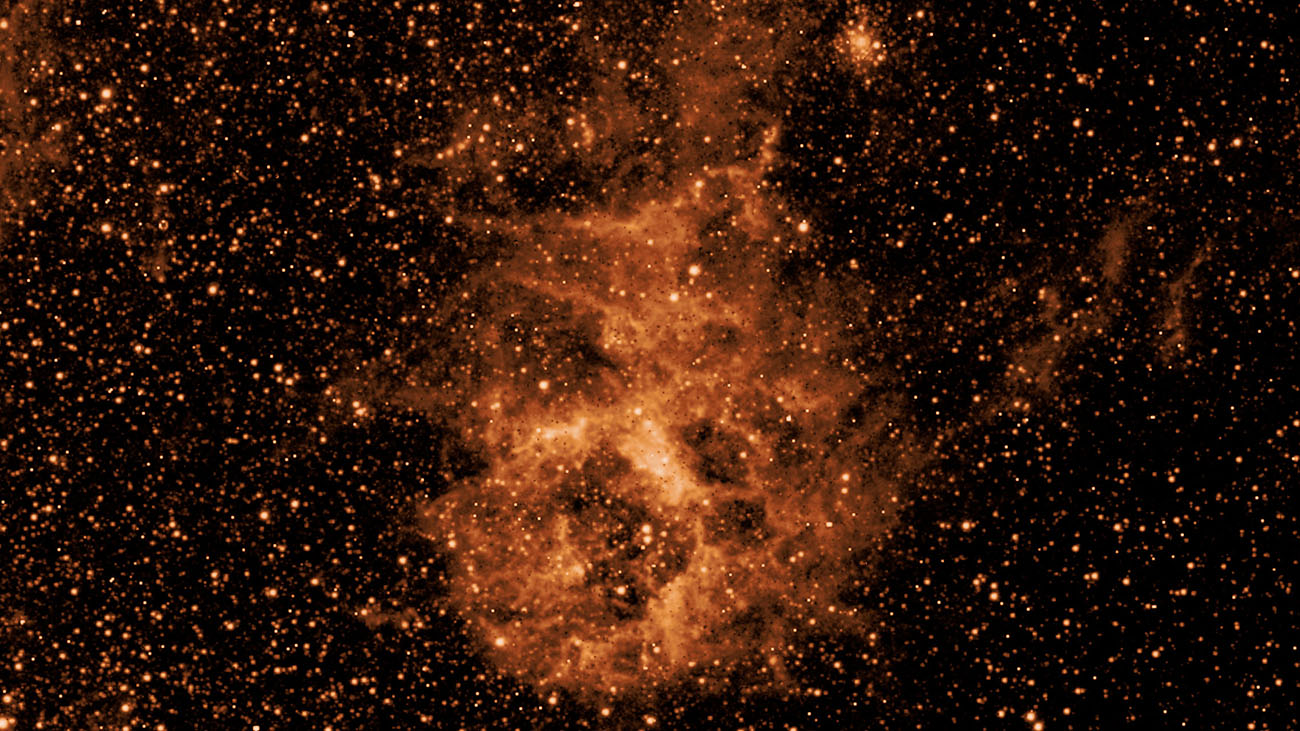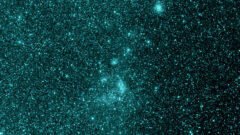Home NASA’s SPHEREx mission is observing the entire sky in 102 infrared colors, or wavelengths of light not visible to the human eye. This image shows a section of sky in one wavelength (3.29 microns), revealing a cloud of dust made of a molecule similar to soot or smoke. (NASA/JPL-Caltech) NASA’s SPHEREx mission is observing the entire sky in 102 infrared colors, or wavelengths of light not visible to the human eye. This image shows a section of sky in one wavelength (3.29 microns), revealing a cloud of dust made of a molecule similar to soot or smoke. (NASA/JPL-Caltech)



